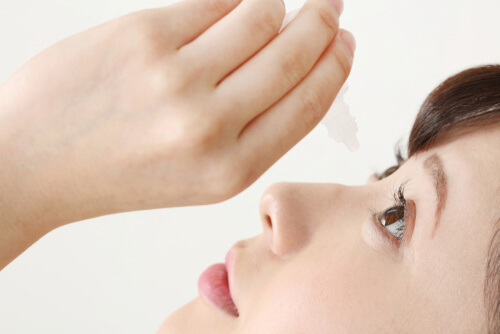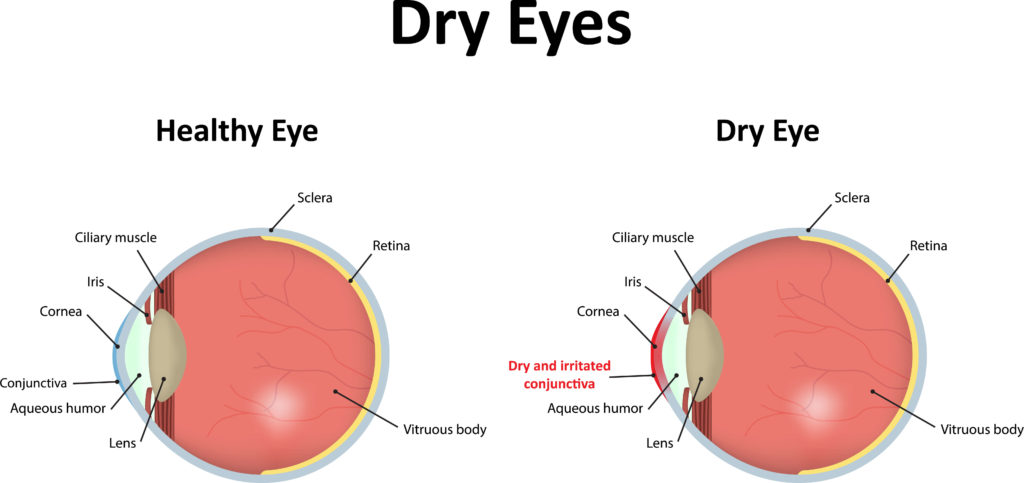What is Dry Eye?
 The eye depends on a flow of tears to provide moisture to maintain comfort and vision. Tears are secreted by special glands located around the eye. When an imbalance occurs around the tear duct, a person may experience dry eyes.
The eye depends on a flow of tears to provide moisture to maintain comfort and vision. Tears are secreted by special glands located around the eye. When an imbalance occurs around the tear duct, a person may experience dry eyes.
What Are the Symptoms of Dry Eye Syndrome?
According to the American Academy of Ophthalmology (AAO), dry eye syndrome is a condition that affects as many as 10 million people in the United States. Many eye doctors have even been quick to refer to this as a modern day health care epidemic. There are various symptoms of dry eyes and some include:
- Scratchy and burning feeling in the eyes
- The feeling of having something stuck in your eye
- Heightened sensitivity to smoke or wind in the eyes
- Light sensitivity
- Decreased vision
- Tired eyes from reading or trying to focus on an object
- Becoming immune to contact lenses
Many people with dry eye syndrome have random blurry vision that temporarily improves with rapid blinking. There are many causes of dry eye syndrome, but in general, the condition occurs because your tears are either abnormal or they are evaporating from your eye’s surface too quickly.
Getting Dry Eye Relief
If you are seeking a better Hawaiian dry eye specialist we recommend that you contact our practice to schedule an appointment to review your specific problems. Please note we have various treatment options available to you for treating dry eye syndrome but through a careful eye examination are we able to determine a treatment protocol.
What Causes Dry Eyes?
Persistent irritations to one or both of your eyes might be a cause of dry eyes. A decreased tolerance to contact lenses is a common symptom as well. Symptoms do vary from patient to patient when it comes to dry eyes. Most patients say they suffer from the feeling that there is something in their eye that is impossible to get out.

Dry eye can be caused by multiple different variables. The quality of the tear film is directly related to the quality of tears that your eyes are producing. The tear film is made up of three separate layers: Oils containing lipids act as the outer layer, Water is the thickest layer and is in the middle, and the last layer is the inner layer of mucus which allows the tears to spread evenly over the eye. The lack of tear production can also lead to dry eyes in the later stages of life. Having trouble blinking may cause your eyes to dry. Environmental factors such as wind, pollution, sun, and dry air inside homes or offices definitely affect the eyes, but especially in a patient with dry eyes. Patients usually do not produce enough natural tears to offset these and other environmental irritants.





